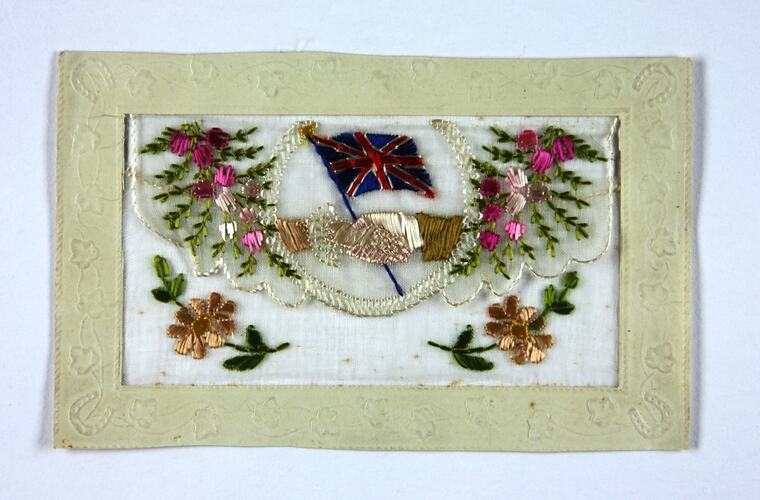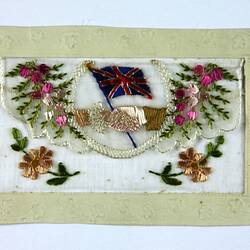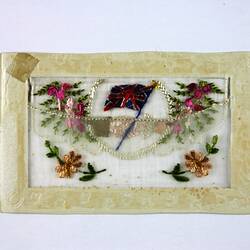Summary
Embroidered postcard, front only, likely the remnant of a card sent by Private William Nairn to his mother Mary Nairn or sister Sarah Jackson during his service in France, 1917-1918, during World War I. He was killed in the trenches of France on 4 July 1918.
This example is of particular interest as it allows the construction of World War I embroidered postcards to be better understood, including the neat finishing of the needlework on the back of the embroidery and the gluing of layers.
According to the Australian War memorial, embroidered silk postcards were first made for the 1900 Paris Exposition. Their popularity peaked during World War I, with a thriving cottage industry from around 1915. The cards were typically 'embroidered on strips of silk mesh by French women in their own homes. There could be as many as 25 cards on these strips. Once completed, they were sent to factories for cutting and mounting on postcards.' Around 10,000,000 handmade postcards were made from 1915 to 1919, with designs including flowers, flags, camps, personal and seasonal greetings and Australian themes. Production ended around 1923.
Physical Description
Cream embossed cardboard frame containing a double layer of sheer white fabric embroidered with pattern of flags and flowers. One layer is shorter and hemmed, opening to form a pocket between the layers, which would have originally contained a small card (now missing). The back of the card, forming a postcard, is also missing.
More Information
-
Collecting Areas
-
Place & Date Written
-
Author
Private William (Bill) J. Nairn - Australian Imperial Force (AIF)
-
Classification
-
Category
-
Discipline
-
Type of item
-
References
Information on silk postcards from [Link 1] accessed 4/4/08.
-
Keywords
World War I, 1914-1918, Military Memorabilia, Death & Mourning, Correspondence



